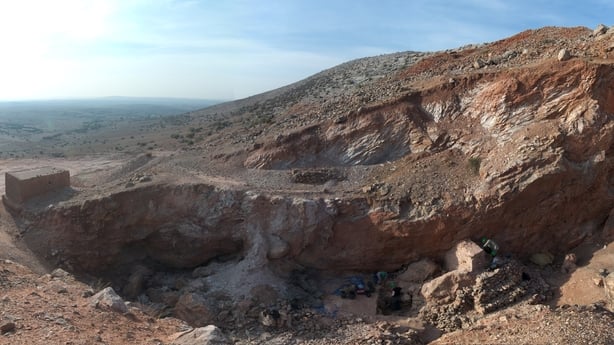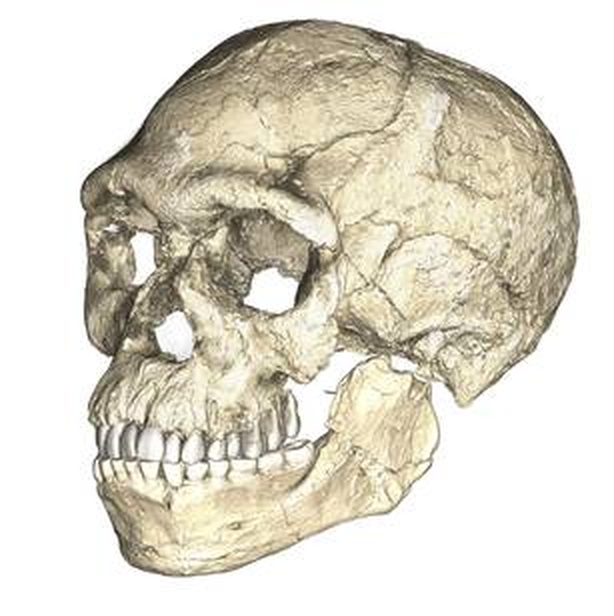The human species began to evolve 100,000 years earlier than previously thought, newly found remains in North Africa show.
The discoveries by international researchers at an archaeological site in Jebel Irhough in Morocco suggest the evolution of man is more complex than previously thought, involving the entire African continent.
The fossilised remains of Homo sapiens, tools made from flint and animal bones unearthed at the site were found to be 300,000 years old, making them the oldest securely dated fossil evidence of our own species ever found.
Until now, the oldest discovered Homo sapien remains, found in Omo Kibish in Ethiopia, were considered to be around 195,000 years old.
Homo sapien fossils thought to be 160,000 years old were also previously found at Herto in Ethiopia.
As a result of these and other discoveries, researchers thought all humans descended from a population living in East Africa around that period.
However, gaps in the fossil record and the uncertain chronological age of many specimens mean that the exact time and place that our species emerged from ancestral humans was uncertain.

As a result, these latest discoveries add a new dimension to the theory, suggesting that in fact prior to the earliest Homo sapien groups leaving Africa, another group existed and dispersed within the continent.
The research, published in two papers in the journal Nature, also shows that by around 300,000 years ago important changes in our biology and behaviour had taken place across most of Africa.
Using 3D modelling, the researchers were able to find that the Moroccan fossils have modern-looking face and teeth, but a large and more archaic-looking braincase.

"The inner shape of the braincase reflects the shape of the brain," said Philipp Gunz, a palaeoanthropologist from the Max Planck Institute for Evolutionary Anthropology in Leipzig.
"Our findings suggest that modern human facial morphology was established early on in the history of our species, and that brain shape, and possibly brain function, evolved within the Homo sapiens lineage."
Although the existence of the Moroccan site has been known for over half a century, it has proven difficult to date it with certainty.
As a result, the fossils found there were originally thought to be around 40,000 years old and considered to be an African form of Neanderthal.
But a fresh excavation which began 13 years ago led to the discovery of a further 16 new Homo sapien fossils, including skulls, teeth and long bones, on top of the 6 already found there.
More modern dating methods were then deployed to accurately estimate the age of fire heated flint tools found with the fossilised remains, leading to the surprising discovery that they were 300,000-350,000 years old.
The team of international researchers also dated a lower jawbone fossil found in the 1960s using radioactivity of the sediments and it tallied with the flint findings.
"Well dated sites of this age are exceptionally rare in Africa, but we were fortunate that so many of the Jebel Irhoud flint artefacts had been heated in the past," said Daniel Richter, a geochronology expert at the Max Planck Institute in Germany and now with Freiberg Instruments GmbH.
"This allowed us to apply thermoluminescence dating methods on the flint artefacts and establish a consistent chronology for the new hominin fossils and the layers above them."

